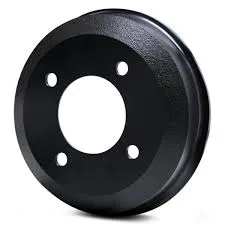
-
 Afrikaans
Afrikaans -
 Albanian
Albanian -
 Amharic
Amharic -
 Arabic
Arabic -
 Armenian
Armenian -
 Azerbaijani
Azerbaijani -
 Basque
Basque -
 Belarusian
Belarusian -
 Bengali
Bengali -
 Bosnian
Bosnian -
 Bulgarian
Bulgarian -
 Catalan
Catalan -
 Cebuano
Cebuano -
 Corsican
Corsican -
 Croatian
Croatian -
 Czech
Czech -
 Danish
Danish -
 Dutch
Dutch -
 ഇംഗ്ലീഷ്
ഇംഗ്ലീഷ് -
 Esperanto
Esperanto -
 Estonian
Estonian -
 Finnish
Finnish -
 French
French -
 Frisian
Frisian -
 Galician
Galician -
 Georgian
Georgian -
 German
German -
 Greek
Greek -
 Gujarati
Gujarati -
 Haitian Creole
Haitian Creole -
 hausa
hausa -
 hawaiian
hawaiian -
 Hebrew
Hebrew -
 Hindi
Hindi -
 Miao
Miao -
 Hungarian
Hungarian -
 Icelandic
Icelandic -
 igbo
igbo -
 Indonesian
Indonesian -
 irish
irish -
 Italian
Italian -
 Japanese
Japanese -
 Javanese
Javanese -
 Kannada
Kannada -
 kazakh
kazakh -
 Khmer
Khmer -
 Rwandese
Rwandese -
 Korean
Korean -
 Kurdish
Kurdish -
 Kyrgyz
Kyrgyz -
 Lao
Lao -
 Latin
Latin -
 Latvian
Latvian -
 Lithuanian
Lithuanian -
 Luxembourgish
Luxembourgish -
 Macedonian
Macedonian -
 Malgashi
Malgashi -
 Malay
Malay -
 Malayalam
Malayalam -
 Maltese
Maltese -
 Maori
Maori -
 Marathi
Marathi -
 Mongolian
Mongolian -
 Myanmar
Myanmar -
 Nepali
Nepali -
 Norwegian
Norwegian -
 Norwegian
Norwegian -
 Occitan
Occitan -
 Pashto
Pashto -
 Persian
Persian -
 Polish
Polish -
 Portuguese
Portuguese -
 Punjabi
Punjabi -
 Romanian
Romanian -
 Russian
Russian -
 Samoan
Samoan -
 Scottish Gaelic
Scottish Gaelic -
 Serbian
Serbian -
 Sesotho
Sesotho -
 Shona
Shona -
 Sindhi
Sindhi -
 Sinhala
Sinhala -
 Slovak
Slovak -
 Slovenian
Slovenian -
 Somali
Somali -
 Spanish
Spanish -
 Sundanese
Sundanese -
 Swahili
Swahili -
 Swedish
Swedish -
 Tagalog
Tagalog -
 Tajik
Tajik -
 Tamil
Tamil -
 Tatar
Tatar -
 Telugu
Telugu -
 Thai
Thai -
 Turkish
Turkish -
 Turkmen
Turkmen -
 Ukrainian
Ukrainian -
 Urdu
Urdu -
 Uighur
Uighur -
 Uzbek
Uzbek -
 Vietnamese
Vietnamese -
 Welsh
Welsh -
 Bantu
Bantu -
 Yiddish
Yiddish -
 Yoruba
Yoruba -
 Zulu
Zulu
മാര് . 06, 2025 15:30
പട്ടികയിലേക്ക് മടങ്ങുക
how adjust drum brakes
Adjusting drum brakes is a critical skill for anyone involved in automotive maintenance or repair. Properly adjusted drum brakes ensure safety, longevity, and efficiency of the braking system. This guide will provide you with a comprehensive, experience-based understanding of how to adjust drum brakes, with expert insights to bolster your authority and trustworthiness in this area.
Expert Tip Always adjust brakes in small increments. This prevents over-tightening, which can cause overheating or premature wear. Additionally, make it a routine to check and adjust drum brakes every 10,000 miles or as required by the vehicle’s maintenance schedule. Test Drive After adjustment, a test drive is essential. Drive the vehicle at a moderate speed and perform a series of gradual stops. Evaluate the pedal feel—properly adjusted brakes will offer firm and responsive feedback. Listen for any unusual noises; squeaking or grinding indicates potential concern areas requiring further inspection. Why Drum Brake Adjustment Matters Regular maintenance and adjustment of drum brakes are vital for several reasons. It optimizes brake performance and helps prevent uneven wear, extending the life of brake components. Moreover, well-adjusted brakes improve fuel efficiency by minimizing drag and reducing the workload on the engine. Experience and Expertise As a practitioner in automotive maintenance, I have encountered numerous vehicles with neglected drum brakes. The experience has taught me that regular attention to brake adjustment can prevent costly repairs and enhance vehicle safety. Knowing how to properly adjust drum brakes not only boosts your skillset but also positions you as a knowledgeable resource in the automotive community. By understanding and implementing these techniques, you establish yourself as an authoritative figure in the field, providing clients with dependable service grounded in expertise. Remember, brake safety is paramount; adjust with precision, and consult the vehicle's service manual for specific guidelines catered to each vehicle model. Keep your skillset sharp and continuously updated with the latest industry trends and technologies to maintain trustworthiness and authority in this ever-evolving field of automotive care.


Expert Tip Always adjust brakes in small increments. This prevents over-tightening, which can cause overheating or premature wear. Additionally, make it a routine to check and adjust drum brakes every 10,000 miles or as required by the vehicle’s maintenance schedule. Test Drive After adjustment, a test drive is essential. Drive the vehicle at a moderate speed and perform a series of gradual stops. Evaluate the pedal feel—properly adjusted brakes will offer firm and responsive feedback. Listen for any unusual noises; squeaking or grinding indicates potential concern areas requiring further inspection. Why Drum Brake Adjustment Matters Regular maintenance and adjustment of drum brakes are vital for several reasons. It optimizes brake performance and helps prevent uneven wear, extending the life of brake components. Moreover, well-adjusted brakes improve fuel efficiency by minimizing drag and reducing the workload on the engine. Experience and Expertise As a practitioner in automotive maintenance, I have encountered numerous vehicles with neglected drum brakes. The experience has taught me that regular attention to brake adjustment can prevent costly repairs and enhance vehicle safety. Knowing how to properly adjust drum brakes not only boosts your skillset but also positions you as a knowledgeable resource in the automotive community. By understanding and implementing these techniques, you establish yourself as an authoritative figure in the field, providing clients with dependable service grounded in expertise. Remember, brake safety is paramount; adjust with precision, and consult the vehicle's service manual for specific guidelines catered to each vehicle model. Keep your skillset sharp and continuously updated with the latest industry trends and technologies to maintain trustworthiness and authority in this ever-evolving field of automotive care.
അടുത്തത്:
പുതിയ വാർത്ത
-
What Are Drum Brakesവാർത്തJul.07,2025
-
Understanding Brake Drum Materialവാർത്തJul.07,2025
-
Semi-Trailer Brake Drum: A Key Component for Extreme Loads and Long-Distance Transportവാർത്തJul.07,2025
-
Drum Brake Pads for Saleവാർത്തJul.07,2025
-
Brake Drums for Saleവാർത്തJul.07,2025
-
Brake Drum Manufacturerവാർത്തJul.07,2025
-
Aluminum Brake Drums: The Future of High-Performance Carsവാർത്തJul.07,2025
